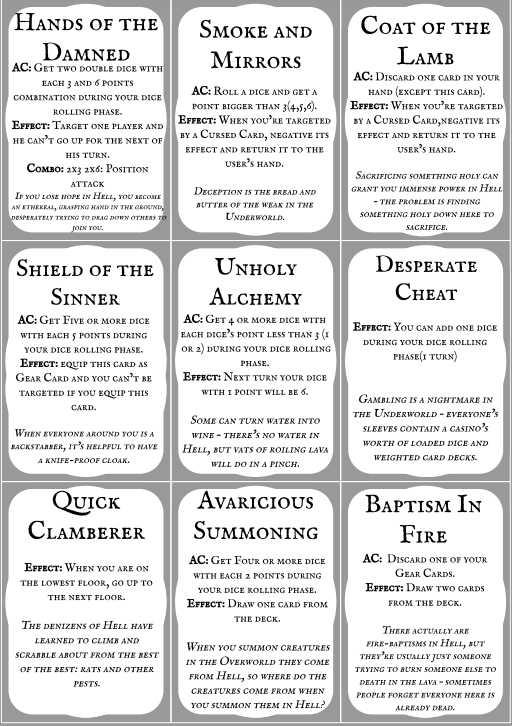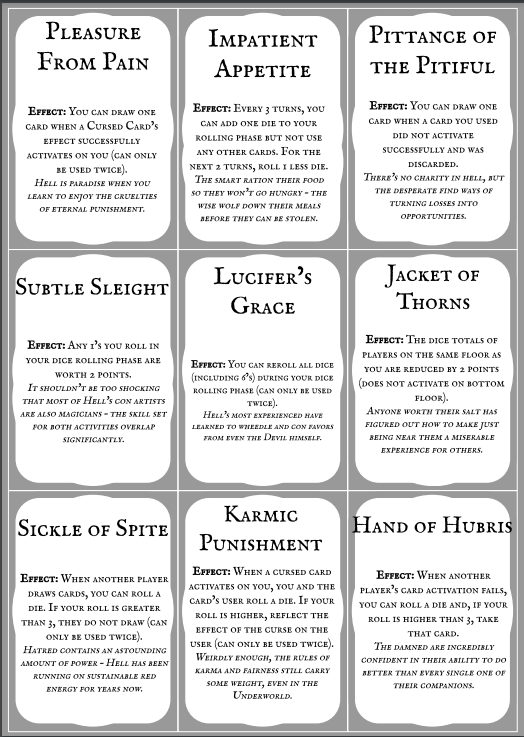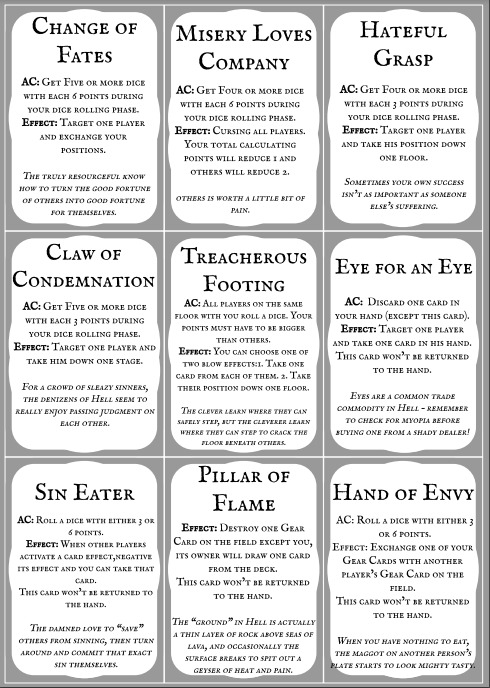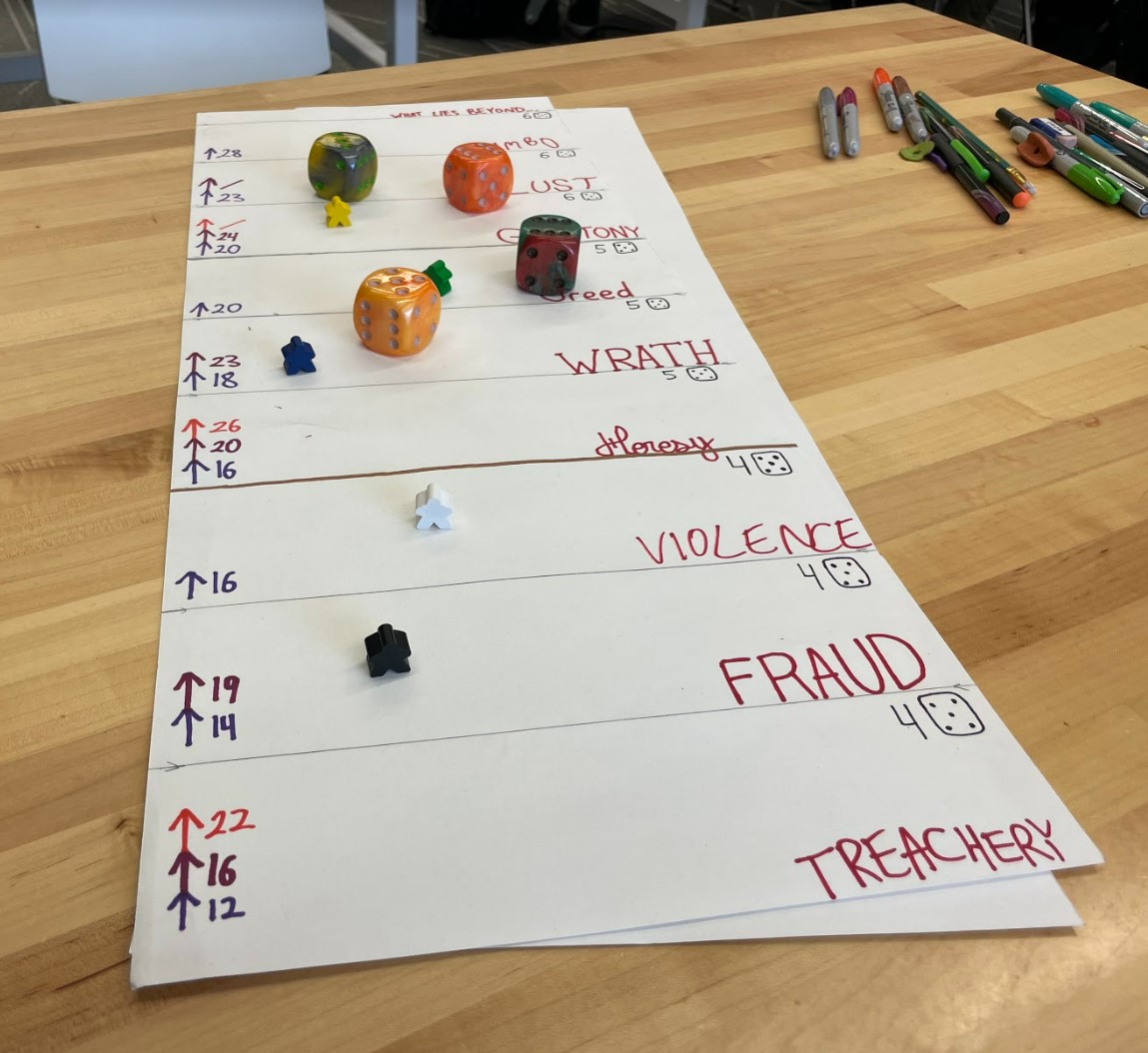The Genesis of Our Idea
Game design is an iterative process where the slightest change to a rule or mechanic can create a game functionally divorced from its original iteration; thus, our group set out to adapt a game we were set to analyze from the class selection. We landed on Richard Garfield’s King of Tokyo which we quickly dissected into aspects and mechanics of the game that we thought functioned well versus what we believed needed some work. Core elements we wished to keep were the risk and reward system presented by dice rolling for actions, competition through player versus player fighting, and a zone based gameplay of advancing versus retreating. Things we believed could be improved upon was the game’s currency system, for our playthrough yielded very few cards bought as we found the prices to be too steep for actual commerce. King of Tokyo was a great starting point for our group as we learned to channel our thoughts on mechanics and affective design in a way that would shape our game to be best fit for what we would like to see more and less of (i.e. continued fierce competition but with a higher turnover marketplace); however, with each iteration our game would expand far beyond its King of Tokyo foundation.

An Exodus from Hell
At first, our iterations consisted of modifications to the basic process of King of Tokyo – although the rules were very different, the core mechanics and experience of the game were the same. However, doing various rule-changing iterations allowed us to better understand the elements of the affective experience that we enjoyed – while we had discussed this previously, hands-on experimentation and play helped us to improve our understanding. One main element that was somewhat present in the game and that became more prominent in our variations was greed as a risky but rewarding pursuit. We focused on this and simplified our core mechanic into rolling dice and being able to reroll for chances of both better and worse outcomes, because this embodied that theme of avarice – and as we realized this would be a central theme of our game, we also came up with the narrative idea of escaping Hell. This game concept worked well, so we continued iterations of it, working towards conveying risk and reward in the gameplay and story; currently, our game consists of climbing up the nine levels of Hell using dice which can be rerolled to give better or worse effects, all while trying to pull down and outpace the other players who are also trying to escape.

Book of Bruno, Chen, Josephine, Ryan, & Steele
Our collaborative process started as a tight-knit game design brainstorming built off of our gameplay session. We collectively decided on what kind of game we wanted to make, and then threw out ideas and designs in real time. We wanted to hit the golden 20% playtesting rule of game design; thus, we wasted no time developing a unique game model that could work. Once we decided on the core mechanics of zones, dice, and pvp alongside our game setting and narrative of trying to escape Hell, we were able to break off and specialize in areas we all felt comfortable in. Bruno is the lead on our board design, Chen is the lead of our cards and special abilities, Josephine is the lead on our story, Ryan is the lead on our numbers and game balancing, and Steele is the lead on our ruleset; thus, we all function as a collective team, working on all aspects of the project but specializing in our respective field. This allows everyone to have creative freedom without creating a problem of too many cooks in the kitchen. While scheduling for all of us has been a minor difficulty, thus making it hard to synergize our ideas perfectly together, we still have been able to stay in constant communication with one another to adapt and design our game collectively. It has made us successful in rapidly prototyping and thinking critically about our created board game in the short span of two weeks.
Accomplishments of Our Project Below:
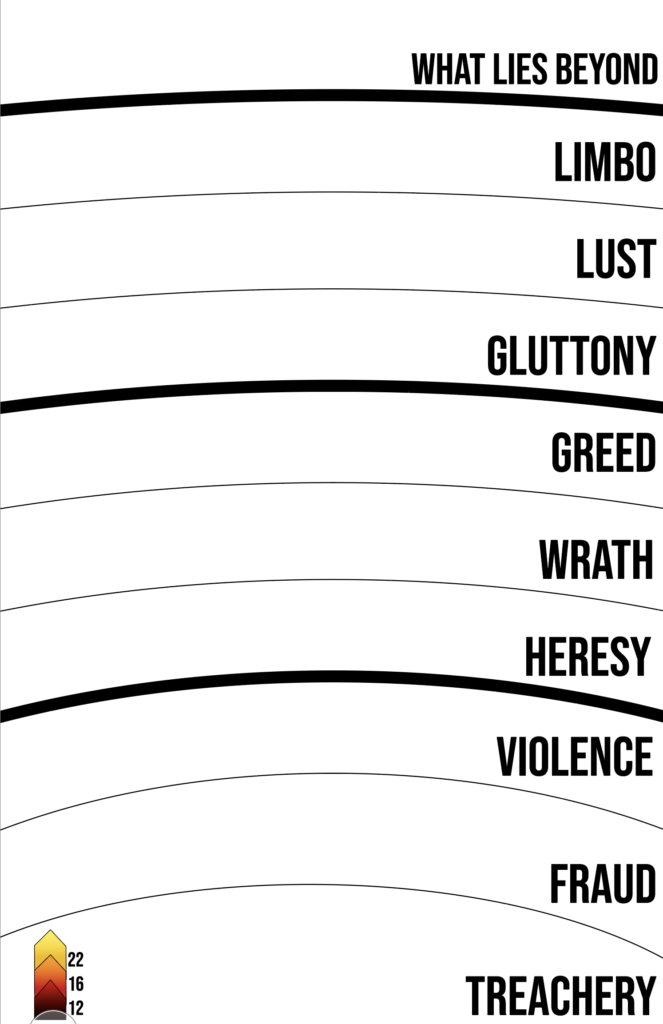
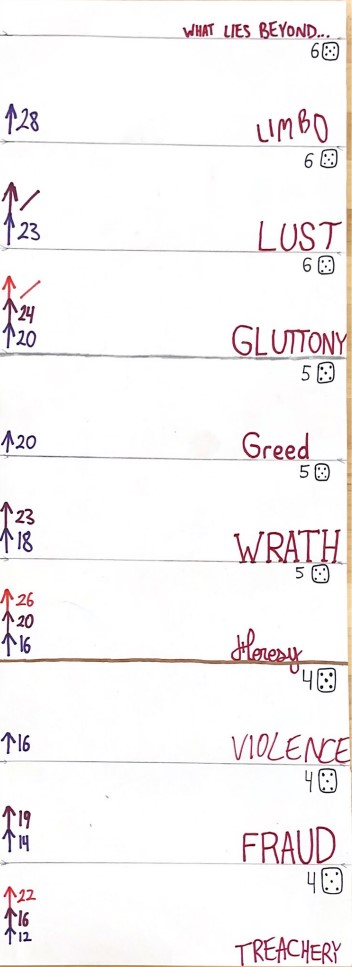
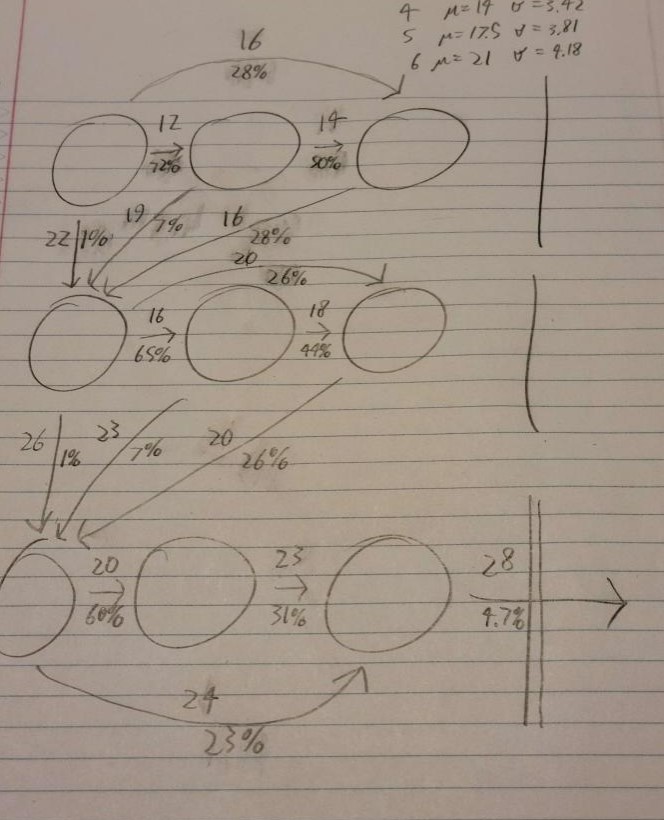
A Fleshed-Out Card System
How it works:
Each player can draw three cards at the beginning.
Each card only can be activated once in one turn then will be discarded.
Players can activate any number of card effects during their turn. But they can’t activate card effects on other players’ turns except the special descriptions(Usually, with the word ‘when’ appears on the card).
All players can only equip one Gear Card. Before equipping a New Gear Card, players have to discard the Old Gear Card. Gear Cards only can be activated when they are equipped. Players can’t replace Gear Cards after he has activated a Gear Card effect.
